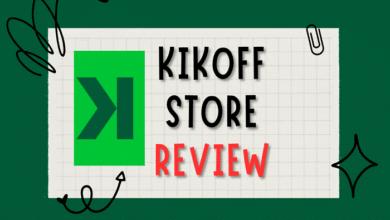Should you invest in adaptability? Absolutely. How to Do It Like a Pro

The world is in a constant state of flux. Technology evolves, economies shift, and consumer preferences change on a dime. In this dynamic environment, the single most valuable asset you can possess is adaptability. But how do you how2invest in something so intangible?
This article will guide you through the process of turning adaptability into a concrete strategy for success. We’ll explore why it’s crucial, identify areas for investment, and provide actionable steps to build your capacity to thrive in a changing world.
Why invest in adaptability?
Imagine a business built on a foundation of sand. One strong economic wave, and the whole structure crumbles. Imagine a company with a flexible foundation that can adjust to the shifting tides. This is the power of adaptability.
Here’s why it’s essential:
- Future-proof your career: Jobs are disappearing due to automation, while new ones are emerging. Adaptable individuals can learn new skills, adjust to evolving job descriptions, and stay relevant in the workforce.
- Navigate economic uncertainty: Economic downturns are inevitable. Those who can adapt their spending habits and income streams will weather the storm better.
- Embrace new opportunities. Adaptability allows you to seize unforeseen opportunities. Maybe a new technology disrupts your industry, but you can leverage it to create a new product or service.
- Reduce stress and anxiety. Change can be stressful. if you’re confident in your ability to adapt, you’ll approach challenges with a proactive mindset instead of fear.
Investing in adaptability isn’t just about surviving change; it’s about thriving in it.
Areas to Invest in: Building Your Adaptability Toolkit
So, how do you actually “invest” in adaptability? Here are key areas to focus on:
- Lifelong learning: make learning a lifelong habit. Take courses, attend workshops, read industry publications, and actively seek out new information. Platforms like [online learning platforms] offer a vast array of courses to expand your skillset.
- Develop a growth mindset: believe that your skills and abilities can be developed through effort and perseverance. A growth mindset fosters a willingness to learn from mistakes and embrace challenges.
- Cognitive flexibility: Being cognitively flexible allows you to switch between different thinking styles and approaches to problem-solving. Practice mental exercises like brain teasers and puzzles to improve cognitive flexibility.
- Emotional intelligence: Understanding and managing your emotions is crucial for adapting to change. Practice mindfulness exercises and develop healthy coping mechanisms to navigate emotional challenges.
- Networking: Build relationships with people from diverse backgrounds and industries. This exposes you to new ideas and perspectives, fostering your ability to adapt. Look for networking opportunities through professional organizations or online communities.
Bonus Tip: Embrace calculated risks. Stepping outside your comfort zone is crucial for developing adaptability. Take on challenging projects at work, volunteer for new initiatives, or travel to unfamiliar places.
Actionable Steps: Your Adaptability Investment Plan
Now, let’s translate these areas into concrete steps:
- Conduct a skills audit. Identify your current skills and knowledge base. Where are the gaps? What skills are most relevant to your future goals?
- Set SMART learning goals: Specific, measurable, achievable, relevant, and time-bound goals will keep you focused and motivated. Aim to learn one new skill every quarter or complete a specific online course.
- Schedule dedicated learning time. Treat learning like an important appointment. Block out time in your calendar specifically for honing your adaptability skills.
- Seek out mentors and coaches. Find individuals who can guide you on your adaptability journey. A mentor can offer valuable insights and feedback, while a coach can help you set goals and hold you accountable.
- Practice scenario planning: Think about potential future challenges you might face. How could you adapt your skills and resources to overcome them? This mental exercise strengthens your adaptability muscle.
- Celebrate small wins. Acknowledge and reward yourself for your progress. This keeps you motivated and reinforces positive learning behaviors.
Investing in Adaptability: A Continuous Process
Remember, investing in adaptability is a continuous process. The world will keep changing, so your adaptability toolkit needs regular updates. Stay curious, embrace new challenges, and never stop learning. By consistently investing in yourself, you’ll be well-equipped to navigate the ever-changing landscape of life and seize the opportunities that come your way.
In conclusion, adaptability isn’t just a desirable trait; it’s a necessity in today’s world. By following the steps outlined above, you can start investing in your adaptability and build a future that’s both resilient and full of possibilities. Remember, the most valuable asset you have is your ability to change.



